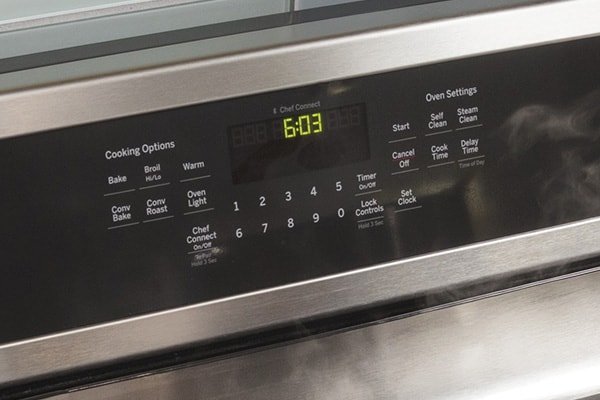
But don’t worry! In many cases, this error code doesn’t mean your cooking plans are doomed. Instead, it might just be a plea for a little TLC—specifically, a simple reset could do the trick. You might be thinking, “A reset? Like turning it off and back on, just like I do with my phone when it’s acting up?” Exactly. Sometimes, electronic appliances just need a fresh start to sort themselves out. Let’s dive deeper into what this error code means and how you can potentially fix it.
Understanding Error Code F1 on GE Ovens and Ranges
Error Code F1 might seem cryptic, but think of it as your oven’s way of saying something isn’t quite right internally. Typically, this code is associated with issues in the oven’s control board or sensor. Imagine your oven’s control board as its brain. If it gets confused or overwhelmed, it might start to panic a little, similar to how you might feel when your computer freezes on you. Essentially, this error could signal that the control board thinks the oven temperature sensor is malfunctioning or that something’s wonky with the electronics.
Another angle to consider is that Error Code F1 could be triggered by environmental factors. Have you ever noticed how electronics act up when there’s a storm, or if it gets too hot or cold outside? Your oven can be just as sensitive. Sometimes, a power fluctuation or a simple glitch can cause the error code to appear. The good news is, like a startled cat, it might just need a little time to settle down.
Here’s the deal: although this error might initially cause a bit of a headache, it’s not always a sign of a major fault. While it could indicate a more serious issue, quite often it’s just a matter of resetting the system to clear the error. So, before calling in the heavy artillery, it’s worth trying a few simple fixes.
How to Reset Your GE Oven to Address Error Code F1
Resetting your GE oven is often the first step you should take when dealing with Error Code F1. Think of it like giving your oven a moment to breathe and regain its composure. To perform a reset, all you generally need to do is turn off your oven’s power for a short period. It’s a bit like a power nap, just in appliance form.
First, locate your oven’s power supply. This might be a dedicated switch or breaker in your electrical panel. Turn it off and wait a few minutes, usually around one to three minutes should do the trick. This downtime allows the oven’s internal electronics to reset themselves. After waiting patiently, switch the power back on and see if the error clears. It’s akin to hitting the restart button on a computer that’s gotten itself into a bit of a tizzy.
If the error is still there after trying a reset, don’t rush to panic mode just yet. Sometimes, resetting might need a couple of tries to take effect. Give it another shot, but if it persists, then it’s time to look deeper. While a reset is a great first measure, it’s not a guaranteed fix, especially if the control board or sensor genuinely requires attention or replacement.
When Resetting Doesn’t Solve the Error Code F1
If you’ve tried resetting your oven and the pesky F1 error still won’t budge, it’s time to explore other possibilities. You see, the oven’s brain or the temperature sensor might be the culprits. Think of it like when your car battery dies; sometimes a quick jump works wonders, but other times, a more in-depth fix is required.
One possible next step is checking the oven’s temperature sensor. This sensor plays a crucial role in regulating the oven’s heat levels. If it’s faulty, it might send incorrect signals to the control board, making it think there’s a problem when there isn’t one. You might need a professional’s help to test or replace this part, though, as it requires some technical know-how.
Alternatively, the control board itself might be malfunctioning. This is the more complex and delicate part of the oven. If it’s the source of the problem, professional repair or replacement could be necessary. While this might sound daunting, it’s a bit like having a leaky pipe at home—sometimes you need to call in a plumber to set things right.
Ultimately, if resetting doesn’t clear the error, it’s wise to consult with a qualified technician. This way, you’ll get to the root of the problem without risking further damage. They can offer precise diagnostics and solutions tailored to your oven’s specific needs.
Preventing Error Code F1 in the Future
Now that we’ve tackled the immediate issue, let’s talk about avoiding Error Code F1 from popping up again unexpectedly. Just like maintaining a car, regular upkeep of your oven can prevent a lot of future headaches. Start by ensuring the oven’s wiring is secure and intact. Loose connections can often lead to electrical issues that trigger error codes.
Moreover, ensure that your oven is well-kept and regularly cleaned. Just as dust accumulates on surfaces in your home, gunk can accumulate in your oven, potentially causing issues over time. A routine cleaning can help maintain optimal performance, preventing electrical components from getting gummed up and misbehaving.
Also, consider investing in a surge protector for your oven, especially if you live in an area prone to frequent power outages or electrical surges. This is like putting a helmet on your oven, providing extra protection against potential damage from sudden power changes.
In conclusion, while Error Code F1 might stop you in your culinary tracks, resetting your oven can often provide a quick fix, giving it a chance to recalibrate itself. However, if resetting doesn’t work, reaching out to a professional can help ensure a long-term solution. By keeping your oven well-maintained, you can minimize the chances of encountering this pesky error in the future, ensuring your cooking adventures continue without interruption.